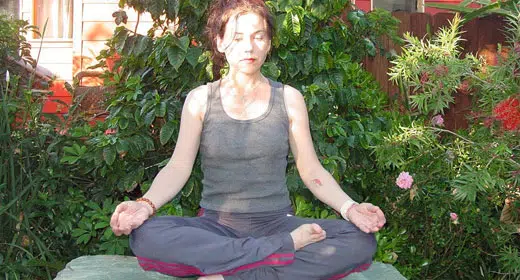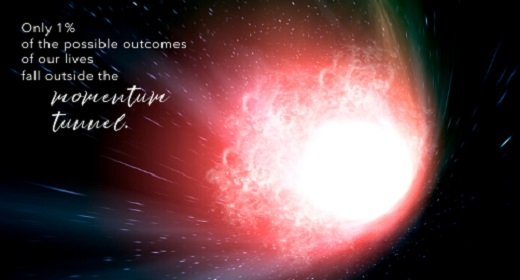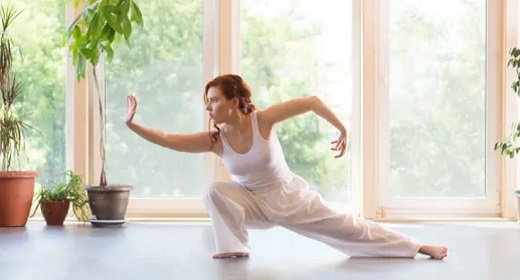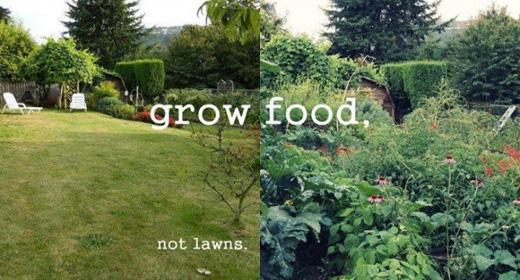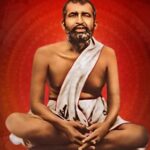by Pedram Shojai: The guiding principle of Qi Gong, is the coordination of the eyes with the body movements…
The literal translation of qi gong is “energy work.” It is an Asian form of yoga that has been around for thousands of years. Much of it is performed while standing, though there are a number of seated sets as well. There are hundreds of systems of qi gong that have come from various lineages, and many of them focus on different fields.Many are health oriented, while a separate group comes through the martial arts lineages.
These systems act to harness willpower, to focus, and to help practitioners channel their energy through their palms. There are also a number of systems from the temples and monasteries that are more focused on spiritual cultivation and depth of meditation. Some involve moving, and others are visualization based. Almost all of them involve specialized breathing, which is coordinated with the activity at hand. The guiding principle of all these practices, however, is the coordination of the eyes with the body movements, the focus of the mind, and the breath, especially for the moving practices. For the more passive, non- movement exercises, we focus the vision inward and explore the inner realms as we guide the breath to various inner chambers.
Let’s take a moment to look at this formula again to see if we can dissect it a bit more. We are looking for the coordination of all (not just a couple) of the following to take place in order for our qi gong to be effective:
The Eyes in Qi Gong
In the West, the eyes are considered the gateway to the soul and, in Taoist theory, are believed to guide the shen, or the spirit. It is said that the qi (energy) follows the shen (spirit), and the blood and body fluids, in turn, then follow the qi.
Therefore, the eyes become the “command center” for the spirit to control and guide the movement of the energy in the body. Later on, we will use the same system to direct energies outside of our body to effectuate healing and exert our influence on the environment around us.
Body Movements in Qi Gong
These are the actual sequenced movements of the qi gong exercises. Many of these follow the pathways of the energy meridians that run through the body. They also often trace the outer edges of our energy fields, smoothing and caressing the potency of the energy flow in our Light Body. These movements often involve various degrees of exertion, and depending on the system you are training in, they can actually be quite rigorous.
Recall the story of Bodhidharma and the Shaolin temple. He created a routine (called the Famous Tamo’s Eighteen Hands of the Lohan) that fully mixed kung fu with qi gong with relatively high levels of exertion. This aspect is very much like the physical yoga systems in the Indian traditions. Some hold static postures, while others emphasize more dynamic flow and continuity of motion.
Mental Focus in Qi Gong
This is a critical aspect of the practice and is the one that students most often overlook. Paying attention is a critical component to any energy work, as it engages the fire energy of the heart and ties the spirit in with the actions at hand. The ancients say the linking of attention and intention creates mastery in life. Here, we are asked to focus on the action at hand and to stay engaged in the body movements, tracking them with the eyes. Doing so demands our mental focus and presence, and the reward is immense. This aspect also draws on the yi, or shen, of the earth element.
Breath in Qi Gong
It is the vital breath that is said to circulate through the various meridians, and it is the energy from the air, if you recall, that mixes with the food qi to create the functional energy of our body. The coordination of breath with body movements and attention drives energy through the designated pathways and opens blockages. We use breath not only to open these pathways but also to gather and store the breath and energy in specific reservoirs (called dantiens) in the body. An adept student learns to extract vital energy from the air through breathwork.
As simple as it seems, it is this framework that sets the precedent for all the magic to occur in qi gong. Now, there is much to be said about the specific movements and the deep understanding of the energy path- ways and how they affect us, but even if we were just to take this level of focus and coordinated thought and breathing into our day-to-day lives, we’d be far ahead of the game.
The good news is that we are about to learn about these pathways, and we are going to unlock and understand the mechanisms of action here. We will engage the intellect (yi) and the attention (shen) with the intention (zhi). Once this “vertical axis” of fire-earth-water has been activated, we’ll have finally unlocked the first hints of our tremendous potential, and a number of powerful changes will start to happen.
This vertical axis gives us the mental and spiritual alignment we need in order to connect all aspects of our being into our body while in our practice. The connection of all the various aspects of ourselves through the practice really begins to snap us out of our trances. Once we correct the flow of energy and divert it away from all the wasteful patterns of our past, we can start to gather and accumulate power in our reservoir and use this as a buffer against disease, fatigue, or simply falling back into a sleepy trance. When we speak of accumulating power or storing energy, we are speaking of creating places where we condense and refine the quality of the energy that is moving through us. We condense it to nourish our essence, and we refine it to illuminate our spirit.
However, we want to be careful to not think of it in capitalistic terms. This is critical in our understanding of qi gong—or life, for that matter. There is actually no need for more energy at all because there is an infinite amount of energy available to us right here and right now. In fact, all the power that ever was or ever will be is here and now.
So, it is important to not get into the “acquisition” game of energy and to instead realize where it comes from. There is no outside source from which we draw energy, like water from a well. The entire force of the universe is flowing through us at all times and in all places. Therefore, it is the impedance or the blockages we create to the free flow of this energy that makes us feel a sense of lack. We channel much of this energy subconsciously to our shadow, and we simply close our minds to the limitless flow of it because it would simply break our ego’s definition of ourselves. We keep our foot on the brake and then wonder why we’re exhausted all the time.
What is the goal of Qi Gong?
The goal of qi gong isn’t an addition process; it is more a subtraction process. The more we can get out of our own way, the more we can let the universal flow of energy move through us. We become an agent of its goodwill, and we take our rightful place in eternity. This is not in some far-off heaven but here and now. Qi gong helps us wake up to the living, breathing moment in which we can finally take part. An important aspect in “getting out of the way” is reconciling the stuck energies in the “horizontal axis” of grief, anger, and frustration. This horizontal soul axis of emotions is intimately involved in the rising and falling trends of our mental and emotional upheavals. It is simultaneously tied to the cycle of life and all the trials and tribulations of the soul. It is important to not be deferential about this and to be engaged in the process of reconciling imbalances on this axis.
It is at this point in the process that most people get stuck because this is where they store the majority of the repressed charge in their shadows. Our desires for addition (wood) and our reluctance to let go (metal) lead to a great deal of clinging and suffering. In playing this game, we get out of balance and unconsciously pour more and more energy into creating “monsters” here.
In Chinese medicine, the lungs represent the metal element, which descends energy naturally, while the liver represents the wood energy, which naturally rises. The lungs sit above the liver in our body, and it is the dynamic tension of trying to maintain this inverted energetic flow that is the essence of life. One pushes up from underneath as the other pushes down. Upon death, the shen of the liver, the hun, ascends to heaven, and the shen of the lungs, the po, descends into the earth. We need them to check each other in dynamic tension; otherwise, they will separate, and we will perish.
Bringing harmony to the proper flow of the horizontal axis is what keeps our lives running smoothly and plugs us into the power of the vertical axis. The proper alignment of attention and intention requires a healthy understanding of the human condition; far from running from it, we are to be engaged, aware, and awake moment by moment.
The Dantiens
Much like the Indian system of chakras that represent different aspects of the light as it expresses through our physical body (see figure 1.2), the Taoist system uses three main energy reservoirs, called the dantiens (see figure 6.3). There is a lower dantien, which is located approximately three inches below the navel between the front of the torso and the spine; a middle dantien, which is centered in the sternum (at the center of the chest and level with the heart); and an upper dantien, which is housed slightly above eye level in the forehead (the third eye).
The lower and middle dantiens range in size but can be approximately the size of a small bowling ball, whereas the size of the upper dantien depends on the level of attainment of the individual—usually any- where from a golf ball to a tennis ball in most people.
The lower dantien is the area where we first learn to direct our breath. It is the foundation of the energy body system. The Taoists believe that it is important to start with the heaviest and densest forms of energy in our cultivation and to work up from there.
Again, yin and yang have differentiated, and the heavier and more yin aspects are located lower in the body. In fact, hui yin, which is the first point of the conception vessel (energy meridian), is located in the perineum and is considered to be the most yin aspect of our anatomy. It is the base of our torso’s energy field and is the point from which the lower dantien energy emerges and returns to. Anchoring the breath and the shen (which is more yang in nature) down to this region brings the first level of balance to our system.
Think of it like a construction job; a solid foundation below gives us a steady structure above. What we want to do in qi gong is systematically go through and balance the energies of our body from base to crown and only move forward once we have done so successfully. We want to concentrate our energy into the lower dantien and then allow ourselves to draw upon this “core” region for every movement. We want all the body’s energy currents to run through here in order to nourish the original qi and post-heaven essence.
The more energy we can release to these systems, the more efficiently we can metabolize foods and run our day-to-day processes. The more we do this, the more trapped or blocked energies we’ll be able to free and the more positive energy, in turn, we’ll have to work with every day of our lives. As we optimize the flow of clean energy through our energy fields, we will be faced with blockages that carry with them mental and emotional content that is deemed “undesirable”—things we’ve stuffed into our shadow.
The more light and awareness we bring, the more our shadows will become illuminated, which leaves less space and power available to hidden subconscious processes. This can be a bit unsettling to face, but remember that we now have increased energy and awareness to deal with what’s there. This is where the middle dantien comes into play. We use the energy of the heart to forgive these events and memories. We learn to disengage from our typical response of empowering these blockages by running and pumping energy into a polarized “solution.” We use the lower dantien to bring up the power (almost like activating a battery and plugging into it); then we use the middle dantien to transform what’s been trapped in our shadows, which we now finally have the strength and ability to deal with.
From here, the new energy is released and refined in the upper dantien, where it becomes pure, undifferentiated light of awareness. The more self-aware we become, the easier this process gets. Alchemy is actually quite fun once the “engine” gets going. There’s always something to clean—always energy to access and things to unlock. Once you get this, there will never be a dull moment in life.
The Different Types of Qi Gong Practice
There is a yin and a yang aspect to everything, including the actual energetic practice. We studied the various types of energy earlier. Now, some of that information will come to light a bit more. The nutritive qi and the defensive qi are the main types of energy running through our body. They tend to our cells and service our myriad physiological needs. For these types of qi, there are practices designed to emphasize one or the other. In fact, there are also practices designed to enhance shen, or spirit, as well as other internal practices designed to cultivate and refine essence and awaken the spirit within. Here are the designations of the various qi gong practices:
Wei gong
This practice concentrates on the exterior energy (wei qi), which is responsible for health, immunity, and the defense of the system against pathogens and disease. It is designed to route energy to these external “force fields” and to create an energetic barrier that protects the internal organs from outside invasion.
Qi gong
This is a general term for the practices that bolster the nutritive qi and that also support the defensive qi. It increases flow to the different systems and provides the body with the necessary boost it needs to nourish and heal itself. Qi gong is the most balanced approach; however, it needs to be modified depending on the circumstances of the individual or for progressing into deeper work.
Nei gong
This is considered the higher alchemical practice that is taught in the temples; it involves a great deal of dedication. Nei gong emphasizes the cultivation and preservation of essence (sexual abstinence mixed with specific practices) so that it can be further condensed and refined to qi and shen. Nei gong leads to the formation of the Light Body and is what has been passed down by the famous Taoist “immortals.” It takes many months of qi gong practice with mental and emotional reconciliation before nei gong is considered safe.
Shen gong
This practice applies to the cultivation of the attention and, specifically, the cultivation of the psychic senses that help us perceive energetic rhythms universally. It aids in clairvoyance, clairaudience, long-distance healing, astral travel, and psionics/mind control. This is obviously high-level stuff, but this practice should not be considered the most important. As far as I’m concerned, this stuff is “cute,” but the real gold is in the nei gong, which effectuates personal transformation. Shen gong is often taught to priests who need to intervene in crises, heal ailments, and perform exorcisms. It is an important part of the knowledge of the Tao, but the danger in the West is in how people glorify the “powers,” which can then serve as a dangerous ego trap.
Just like the emphasis we put on getting the physical body healthy and fit, it is important to start here with the foundations of qi gong and work our way up. This means working diligently on our stance, which will help ground our energy and give us “roots.” Stances develop the lower dantien and strengthen the wei (or defensive) qi. Once we build a strong foundation, we can really begin to reap the powerful benefits of this practice. From here, we learn about the mysteries of the Tao and become more self-aware.
Words of Caution about Qi Gong
We need wax for a candle to be a candle and to serve its purpose. Thus, the practice begins with foundational work that will strengthen our muscles, bones, energy flow, and resolve. We are blessed to have these systems available to us, and it is truly fortunate that the air of secrecy that originally surrounded these arts has changed in our age. That being said, though, there is work to do, and shortcuts are dangerous.
Taoism is about maintaining balance and harmonizing the polarity consciousness that has infected the minds of our culture. Just like you can’t “power nap” each night for an hour instead of getting a full night’s sleep, you can’t not do the work. Sure, you can get away with those power naps for a few days or weeks (likely with the help of stimulants and drugs), but you’ll quickly burn out.
Again, look at this behavior bathed in the full light of what we have learned about aversions and cravings. Look at how some people will do anything to avoid feeling their past and the nonsense they will resort to in order to run from themselves. This is not healthy behavior, and we are here to correct it. The way is the training.
I have been practicing and teaching in Southern California for decades now, and I have encountered a great many “hungry ghosts.” These spiritual shoppers are looking for a quick fix and will do something that is convenient, but they are not willing to put in any real work. This is especially true if the work challenges them to face the content in their shadows. I find it very telling to see how a student engages in a practice and with what level of commitment. When someone is given a specific diet that avoids foods that they are allergic to (validated by testing) and they fail to comply because it is “too hard,” then that is a telling characteristic of a zombie—someone who is completely powerless to face him- or herself. I see much of the same with people who want the “fuzzy” stuff with the qi gong but are unwilling to do the foundation-building work. They are impatient and will get nowhere. I’m here to help, but I can’t do the work for you. I will point you in the right direction, though. So, take a deep breath, and let’s get into the training!


